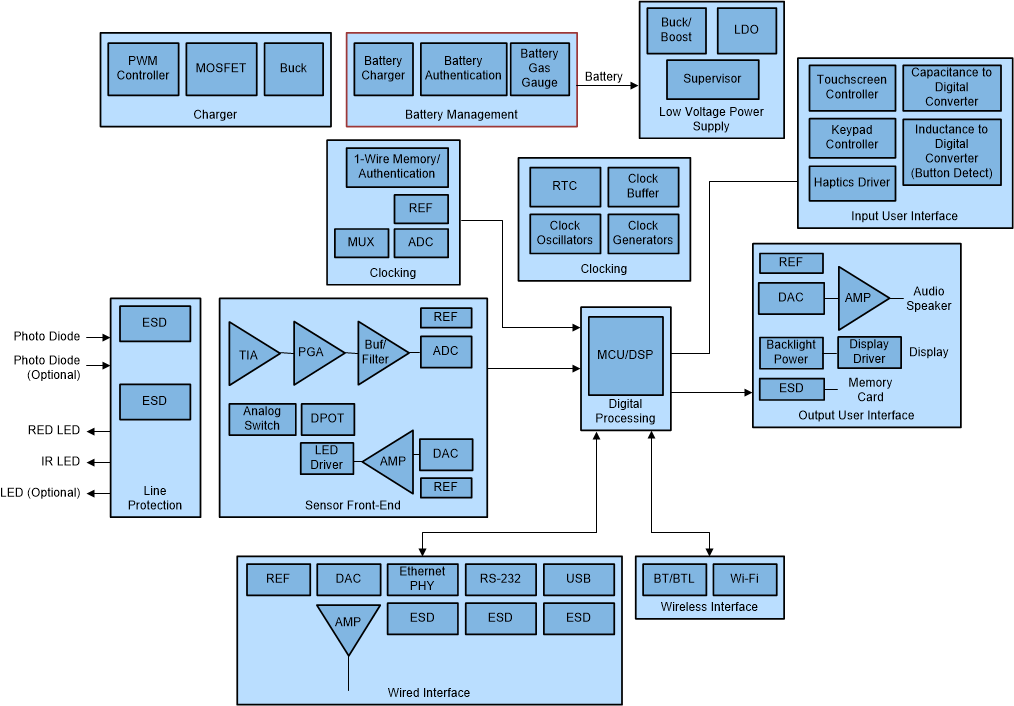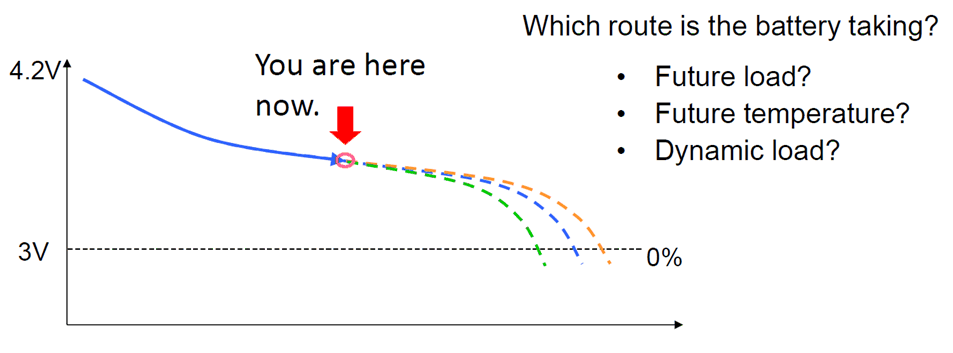SLUA893 July 2018 BQ27520-G4 , BQ2970 , BQ2971 , BQ2972 , BQ2973
1 TI Tech Note
The industrial field is rapidly changing and there is a growing need for accurate battery management solutions in the medical sector. With emerging technologies such as remote patient monitoring and wearables, healthcare coverage is able to reach a wider audience. It is critical to have a robust battery system with a gauge and protector that can not only enhance the safety of your system, but also extend the run-time of the battery. Gauges also serve to provide authentication to ensure safe and authorized OEM battery packs are utilized. Another useful feature that a gauge can provide is being able to provide an early warning of when a battery is nearing the end of its life.
Li-ion batteries are highly efficient and can store a lot of energy in a tiny package. However, they are becoming increasingly volatile because there is a growing demand for higher-capacity batteries in smaller packages at a cheaper cost. The trend for modern technologies is having the design be as lightweight and small form-factor as possible, but battery failures can still happen such as short-circuit and fires. By having protection devices that can accurately monitor and provide trigger thresholds for overcurrent protection during high discharge and charge current operation, as well as, protect during battery overcharge and depleted conditions, one can expect safe and reliable operation from batteries.
Some examples of end equipments where gauges can be used in the medical sector are bedside patient monitors, blood glucose monitors, x-ray machines, insulin pumps, and other wearable health monitors. Shown in the figure below is a block diagram of a Pulse Oximeter. This diagram shows where a battery gas gauge can sit within the battery management subsystem.
 Figure 1. Pulse Oximeter Block Diagram
Figure 1. Pulse Oximeter Block Diagram Accurate battery gauging also helps to prevent premature shutdown of your system. In the case of a fitness wearable, the system must be optimized for small battery capacities, however, small capacity cells are more sensitive to small changes in load current and temperature. These small changes can impact critical decisions made by the system, so having accurate information about the state of the battery is paramount.
Furthermore, it is important to maintain or extend battery cycle life. Applications that require faster charging require higher current, and over time this can accelerate cell aging. During charging, lithium plating (metallic lithium deposition) can form during charging, resulting in reduced performance for rechargeable batteries. Plating can also be caused by charging at low temperatures. With Texas Instruments Impedance Track™ and smart charging technology, batteries can have increased longevity by predicting remaining battery capacity with >99% accuracy, as well as, fastest possible charging without additional degradation.
Traditional medical equipments have batteries already, typically large ones. However, having a bigger battery does not necessarily mean it will last longer for your application. As shown in Figure 2, battery capacity is affected by many parameters such as current, voltage, and temperature. Two important factors to take into consideration is battery life, or how many cycles can be obtained from a battery, and run-time, or being able to confidently use all available battery capacity with no surprises such as early shutdown. Receiving an early warning of battery life is also important for obvious reasons such as avoiding patient casualties due to faulty medical devices.
 Figure 2. Accurately estimate capacity with varying conditions
Figure 2. Accurately estimate capacity with varying conditions